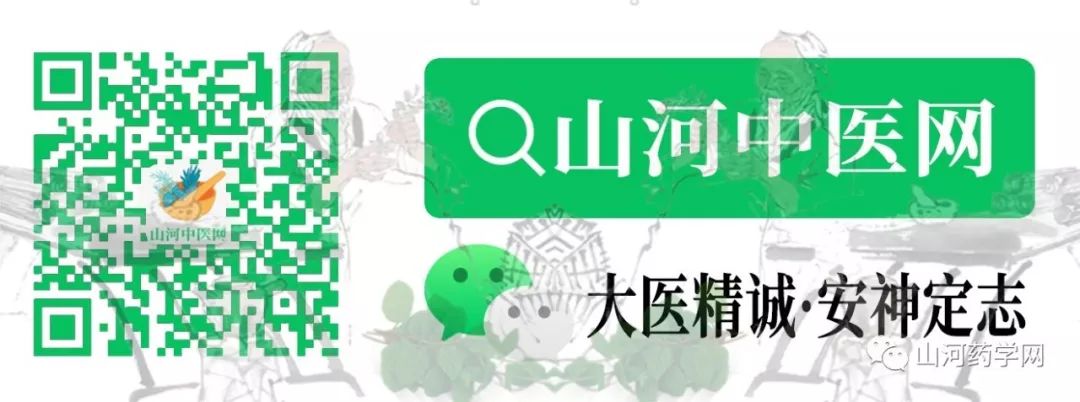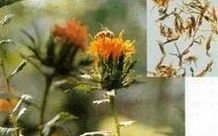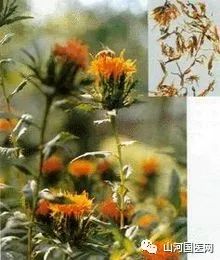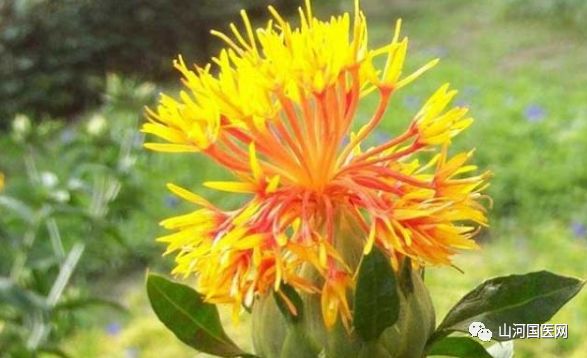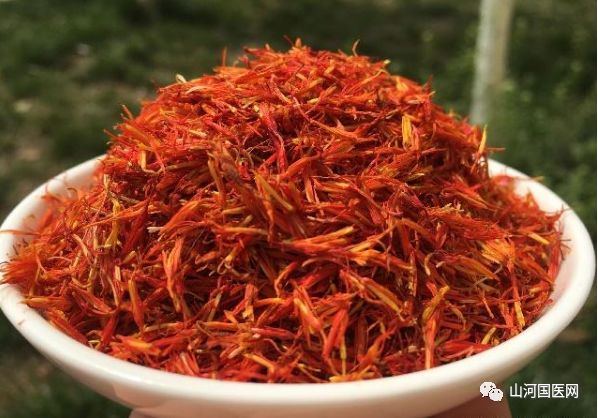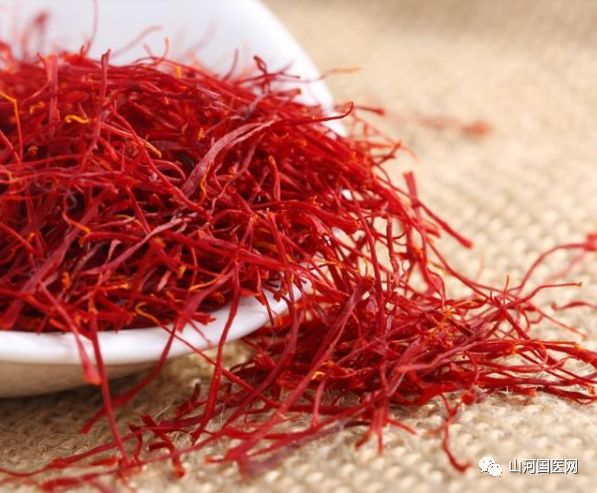| Safflower Hónɡ Huā | |
|---|---|
|
|
|
| Alias | Grass Safflower, Red Blue Flower, Spiny Safflower |
| Functions | Invigorates blood circulation and relieves pain. Used for amenorrhea, dysmenorrhea, retained lochia, abdominal masses, traumatic injuries, and painful swellings. |
| First Recorded In | Ben Cao Tu Jing |
| Toxicity | Non-toxic |
| Meridian Affiliation | Heart Meridian |
| Nature | Warm |
| Taste | Pungent |
[Source] Newly Revised Materia Medica.Alias: Grass Red, Spiny Red Flower, Du Red Flower, Golden Red Flower.Product Names:Du Red Flower:Produced in Ningbo, Zhejiang, of good quality.Huai Red Flower:Also known as Huai Red Flower, produced in Wenxian, Qinyang, Wuzhi, and Mengxian areas (formerly Huaiqing Prefecture), also of good quality.San Red Flower:Produced in Shangqiu, Henan, also of good quality.Da San Red Flower:Produced in Shandong.Chuan Red Flower:Produced in Sichuan.Nan Red Flower:Produced in southern China (some say from Nanchong, Sichuan).Xi Red Flower:Produced in Shaanxi.Yun Red Flower:Produced in Yunnan.All of the above should have bright red or yellow flowers, be dry, and have a soft texture.Red Flower Cake:Also known as sliced red flower, made from fresh safflower pounded into a paste, shaped into thin slices, and dried for medicinal use.Source: The tubular flowers of the Asteraceae plant, safflower.Grown nationwide.Harvested in summer when the flowers are orange-red, dried in the shade, sun-dried, or baked dry.Characteristics: Tubular flowers are 1-2 cm long, with a surface that is red-yellow or red;the flower crown tube is slender, with 5 lobes at the tip, lobes are narrow and 5-8 mm long;5 stamens, anthers fused into a tube, white together;the stigma is slender and cylindrical, with a slightly bifurcated tip.Soft texture.Has a faint fragrance, with a slightly bitter taste.Chemical Components: Contains safflower glycosides, new safflower glycosides, safflower quinone glycosides, safflower polysaccharides, palmitic acid, cinnamic acid, and lauric acid.Nature and Taste: Warm in nature, pungent in taste.Functions and Indications: Invigorates blood circulation and relieves pain. Used for amenorrhea, dysmenorrhea, retained lochia, abdominal masses, traumatic injuries.In ancient times, it was common to add a small handful of safflower when there was blood stagnation in the body:Wrap in gauze and boil, can be used for foot baths twice a day, suitable for various varicose veins, peripheral neuritis, and blood circulation.For numbness or cyanosis in the legs and feet due to blood stasis.NoteThe fruit is called Bai Ping Zi, containing “safflower seed” oil, which can lower cholesterol and hyperlipidemia; soften and dilate blood vessels, prevent aging, and regulate endocrine functions.Medicinal Safflower:[Source] This product is the dried flower of the Asteraceae plant, safflower.[Herbal Characteristics] Flowers are mostly clustered into irregular clumps.Red or red-yellow.Single flowers are about 1.5 cm long.The flower crown tube is slender, with 5 lobes at the tip, lobes are narrow and 5-7 mm long.5 stamens, anthers fused into a tube, yellow.The stigma is long and cylindrical with a slightly bifurcated tip.Soft texture.Has a distinctive fragrance, with a slightly bitter taste.When soaked in water, the water turns golden yellow, and the flowers do not fade.[Dosage] Internal use:Decoction, 3-10 g.To nourish blood and harmonize blood, use less; to invigorate blood and dispel stasis, use more.[Functions and Indications] Invigorates blood circulation, dispels stasis and relieves pain, used for amenorrhea, dysmenorrhea, retained lochia, abdominal masses, traumatic injuries, and painful swellings.[Note] Use with caution in pregnant women.[Verification]:From Ben Cao Tu Jing: “Red Blue Flower, that is Safflower. Now it is found everywhere.People plant it in their gardens, sowing seeds in fertile soil in winter, seedlings grow in spring, flowers bloom in summer, and the flowers are collected by the gardeners when they are dew-laden, and they continue to bloom until they are finished.The seeds are white, about the size of small beans.The flowers are dried to dye true red and to make rouge.It is mainly used for postpartum blood diseases.It is indeed the same.The leaves are somewhat similar to blue, hence the name blue.” Ben Cao Shu Gou Yuan: “Red Blue Flower, nourishes blood when boiled in water, breaks blood when cooked in wine.“[Indications]:Amenorrhea;Dysmenorrhea;Postpartum stasis abdominal pain;Chest pain due to stasis;Traumatic injuries;Joint pain;Stroke paralysis;Purplish rashes.
Verification
1. From Ben Cao Tu Jing: Red Blue Flower, that is Safflower. Now it is found everywhere.People plant it in their gardens, sowing seeds in fertile soil in winter, seedlings grow in spring, flowers bloom in summer, and the flowers are collected by the gardeners when they are dew-laden, and they continue to bloom until they are finished.The seeds are white, about the size of small beans.The flowers are dried to dye true red and to make rouge.It is mainly used for postpartum blood diseases.It is indeed the same.The leaves are somewhat similar to blue, hence the name blue.2. Ben Cao Shu Gou Yuan: Red Blue Flower, nourishes blood when boiled in water, breaks blood when cooked in wine.
Indications
Amenorrhea;Dysmenorrhea;Postpartum stasis abdominal pain;Chest pain due to stasis;Traumatic injuries;Joint pain;Stroke paralysis;Purplish rashes.
Contraindications
Use with caution in pregnant women.
Selected Formulas
1. Safflower Wine Formula (Jin Kui Yao Lue), has the function of invigorating blood and promoting circulation, relieving qi and alleviating pain.2. Tao Hong Si Wu Tang (Yi Zong Jin Jian), nourishes blood, invigorates blood, and dispels stasis.3. Xue Fu Zhu Yu Tang (Yi Lin Gai Cuo), invigorates blood, dispels stasis, promotes qi and relieves pain, indicated for blood stasis in the chest, poor blood circulation, chest pain, and persistent headaches.4. Tong Qiao Huo Xue Tang (Yi Lin Gai Cuo), invigorates blood and opens the orifices, indicated for headaches and dizziness due to stasis in the head, or vitiligo, as well as women’s blood deficiency.5. Shen Tong Zhu Yu Tang (Yi Lin Gai Cuo), invigorates blood, promotes qi, dispels stasis, and relieves pain, indicated for shoulder pain, arm pain, waist pain, leg pain, or generalized pain due to qi and blood stasis in the meridians.6. Fu Yuan Huo Xue Tang (Yi Xue Fa Ming), invigorates blood, dispels stasis, and soothes the liver, indicated for traumatic injuries, and stasis in the hypochondrium causing unbearable pain.
Various Discussions
1. Tang Ben Cao: Treats lockjaw, blood clots, and various postpartum diseases.2. Kai Bao Ben Cao: Mainly for postpartum blood circulation issues, lockjaw, abdominal pain due to retained blood, and miscarriage, cooked with wine.Also indicated for toxic blood loss.3. Ben Cao Meng Quan: For throat obstruction and choking, juice is made and swallowed.4. Gang Mu: Invigorates blood, moistens dryness, relieves pain, disperses swelling, and opens the meridians.5. Ben Cao Zheng: For blood heat causing difficulty in expelling rashes, disperses purplish rashes and blood stagnation.6. Ben Cao Zai Xin: Promotes urination, reduces swelling, stabilizes pregnancy, and expels dead fetuses.7. Ben Cao Yan Yi Bu Yi: Safflower breaks blood and nourishes blood.Excessive use can cause blood to flow uncontrollably.8. Ben Cao Jing Shu: Red Blue Flower is a key medicine for invigorating blood.It is mainly used for postpartum blood dizziness and lockjaw due to retained blood not descending, which causes dizziness and lockjaw.Abdominal cramping is due to retained blood, and if the fetus dies in utero, it cannot descend without invigorating blood.Stasis leads to blood activation, thus stopping cramping and expelling dead fetuses.Red Blue Flower is primarily a blood-invigorating medicine.Blood dizziness and stasis are resolved, thus stopping; excessive use can cause blood to flow uncontrollably and lead to death.9. Ben Cao Hui Yan: Safflower breaks blood, invigorates blood, harmonizes blood, and regulates blood.It is indicated for various diseases caused by blood issues during pregnancy, or blood irritability and dizziness, mental confusion, or retained lochia causing heart pain and abdominal cramping.10. Yao Pin Hua Yi: Safflower is good for opening and benefiting the meridians, being a qi medicine in the blood, capable of both purging and supplementing, each with its own significance.If used excessively, it can be too pungent and warm, causing blood to disperse.Combined with Su Mu to dispel blood stasis, and with Rou Gui to open amenorrhea, assisting Gui and Shao to treat widespread or chest and abdominal blood qi stabbing pain, this is its function to guide and invigorate blood.If used sparingly, it can soothe liver qi and assist the blood sea, greatly supplementing blood deficiency; if used minimally, it enters the heart to harmonize heart blood, dispersing heart fire, thus harmonizing blood; the significance of dosage is profound.Disclaimer:The content on this site is added and organized by users for learning and reference purposes only. The information on the site may not be accurate, comprehensive, or up-to-date, and the content should not be the final basis for diagnosing or treating diseases.Shanhe TCM Networkreminds users that if there are any physical discomforts, please seek medical attention promptly. Thank you for your support and love; we will strive to do better~!!!
